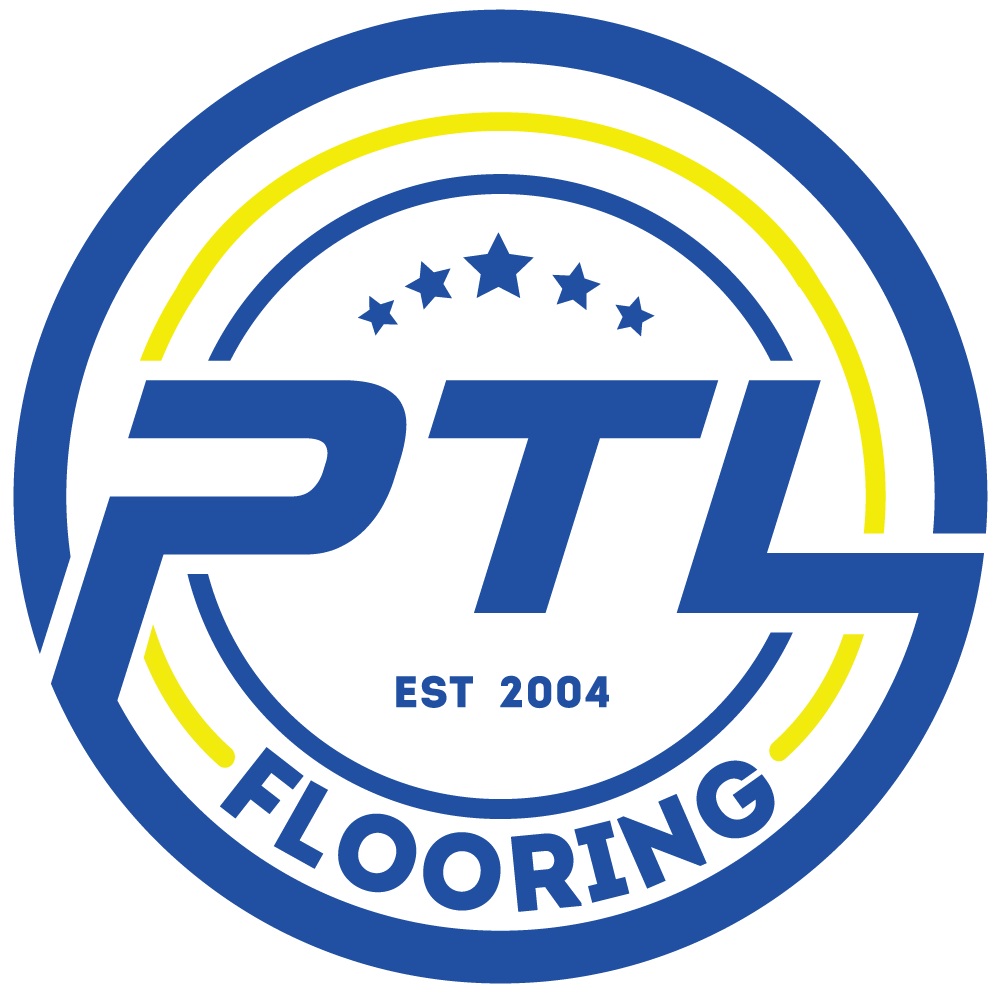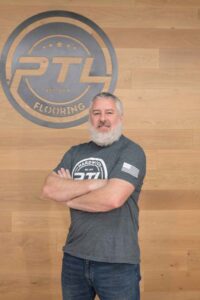A common question we get is “What is the best finish for my hardwood floor?”. Unfortunately its not as simple to answer. We offer several finishes and in their own category they each can be considered the best. There are four different finish types that we have used extensively so, I will explain some of the differences here in order for you to make an informed decision about what finish you should get for your hardwood floors.
Let’s start with what used to be the most popular finish here in Washington State, and that is conversion varnish or what traditionally is known as “Swedish Finish”. This is a great finish that is very durable and works well. It gives wood a nice warm hue. It doesn’t show scratches as easily as some other finishes, it is almost self-healing. What we mean by self-healing is that when it gets scratched the finish cuts cleanly so it doesn’t reflect the light, readily making it harder to see the scratch. A waterborne finish, on the other hand, although it is harder when it does get scratched, actually fractures and thus reflects the light making them easier to see.
It is called “Swedish Finish” because it was first developed and came over here from Sweden. A company called Glitsa was started in Seattle in the 1950’s producing this “Swedish finish” and that’s why it has been so popular here in the northwest for so long. And the fact that it is a durable finish.
The main drawback to the conversion varnish is that it is high in VOC’s. The chemicals in conversion varnish are very potent and will stink up the house for a few days driving just about anybody away. You cannot stay in the home while the finish is being applied and drying. If you have chemical sensitivities or little kids in the home we do not recommend this finish unless you can be away for a prolonged period of time.
Because of the high VOC content and health concerns of being exposed to those chemicals as much as we are during the application process after 20 years of use we have decided not to offer this type of finish any longer. The other finish types that we use that I’ll explain here have come a long way in development making them more durable and a better option. There isn’t a good enough reason anymore to continue to use conversion varnish.
The most popular type of finish we use today is a waterborne finish. A lot of money and time is spent in research in the ever evolving world of waterborne finishes. There are only a couple of manufactures that make conversion varnish compared to many manufactures that make a waterborne finish. Companies such as Pallmann, Loba, Bona, Pro Coat, etc. As well as there are multiple types of waterborne finishes. We will just stick with the two most common types of waterborne finishes that we use which are commonly referred to as a single component and two component, or what we in the industry call 2k. There is also UV cured and oil modified waterbased but we won’t get into those here because we do not use them often enough.
Occasionally we will get a complaint from someone that had their floors refinished by a different company and that the waterborne finish didn’t hold up well and they don’t want to use it. Well, don’t throw the baby out with the bath water. Not all finish is made the same, some use cheaper resins that don’t perform the same as another waterborne finish. The sanding process plays a large part in the performance of a finish. An improperly sanded floor will cause the finish to wear out a lot faster than a properly sanded floor.
Let’s take a brief look into the two types of waterborne finish that we use. First, and most popular is a 1 part waterborne finish. These do not need an additional hardener or catalyst added in order for them to dry and cure. Thus, they are less expensive to produce and use. There is a large gap between good finishes and ones that are not made as well, it depends upon the chemical make up of the finish and what resins are used in it. Even a quality manufacture makes different types of waterborne finish that some will perform a lot better than others. Pallmann, for instance, is a popular brand that we use. They make a finish called 96 and one called Power. The Power is a superior performing finish compared to the 96 even though they are both considered a single component finish. They each use different resins which affects the price point and wearability of the finish. So we offer only the Power and not the 96.
A single component, or 1k, waterborne finish is typically not as durable as a good 2k finish. So why do we use it so much? Well not everyone needs the absolute best finish out there. Some people don’t have such an active home so a 2k finish would be overkill. Also the expense is quite a bit more for a 2k finish, so if a 1k will perform just fine for the given situation, it makes sense to save some money and use it. We recommend this finish to people that don’t have a lot of traffic on their floors.
Now onto 2k waterborne finishes. These are the best in durability when it comes to film finishes. The higher quality ones can withstand a lot of traffic and use. Its what we recommend for busy households and commercial spaces like office buildings. They have a hardener/catalyst which makes the finish harden and cure faster. For instance Pallmann Power has a 5 day full cure time while the 2K Pallmann Gold has a 3 day full cure time. The downside to 2k finishes is that it is more costly to use them so you have to ask yourself is the higher durability worth it.
Both of these types of waterborne finishes are lower in VOC’s than a conversion varnish so they are better suited for those with chemical sensitivities or those seeking a lower VOC option. These finishes are also more clear than conversion varnish, so they won’t amber over time like a Swedish finish will. The house can be aired out and used sooner due to the lower VOC’s. Although they are waterborne please realize that there is still harmful chemicals in the finishes and we recommend staying out of the house until the finishing process is complete.
The fourth type of finish we offer is known as Hardwax Oil (HWO) or Penetrating Oil (PO). Technically, these are two separate types but they get bunched together. These are our favorite to use. We’ve been using them for over 15 years now. Hardwax oils have zero to very little VOC’s to them, making them healthier to use both to the applicator as well as the homeowner. HWO’s are a penetrating finish so they protect the wood by penetrating it and sealing it from within. So there is no finish on the surface of the wood to scratch and wear off. Compare that to a waterborne finish that is a film forming finish, because it makes a film that covers the wood to protect it which looses some of the natural beauty of the wood.
A HWO is easier to fix and maintain as you can touch up and reoil just the areas that need it. The whole floor doesn’t need to be done.
The only downside to HWO, and the reason we don’t use it exclusively, is that it doesn’t produce a full finish look like a conversion varnish or waterborne finish. It’s not a film finish so it looks different, you can’t have a semi-gloss sheen to it. HWO/PO over time gives the wood a nice natural sheen and patina. It is the best of all the finishes in grain clarity for those that love the look of wood. Also, it does have a slight potential to spot in a kitchen with certain types of acidic foods.
We have successfully used HWO’s in such places as churches, office complexes, restaurants and a science center, all of which receive hundreds of people a day and it holds up like no other finish could. We think its the best choice for a floor. Our rigorous testing in our shop also agrees as it has held up to some extreme events. The floor in our showroom and most of our samples are done in a HWO. Our reception desk is done in a PO and has held up wonderfully and looks amazing. The look and feel of this finish just can’t be matched.
Hope this helps to explain some of the differences in the finishes and why we offer different ones. Please ask if you have any further questions.

